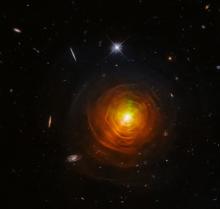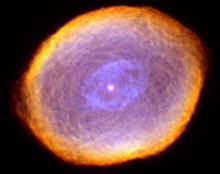Listen to today's episode of StarDate on the web the same day it airs in high-quality streaming audio without any extra ads or announcements. Choose a $8 one-month pass, or listen every day for a year for just $30.
You are here
Making a Star
Our galaxy, the Milky Way, is home to hundreds of billions of stars. Some are small, cool, and faint. Others are big, hot, and dazzlingly bright. Yet they all formed in the same basic way: from the collapse of a cloud of gas and dust.
At first, such a cloud is cold and dark. Then something causes it to break into smaller clumps — perhaps the shockwave from a nearby exploding star.
After that initial jolt, the gravity of the gas and dust in each clump causes it to collapse. As the material gets squeezed, it heats up. Eventually, it forms a warm ball surrounded by a wide disk — a stage known as a protostar.
After a million years or so, a protostar that’s up to a few times the mass of the Sun becomes a T Tauri star. It looks like a fully formed star, but it’s much brighter. That’s because it’s still collapsing, so there’s a lot of surface area to radiate energy into space.
At first, that glow comes from the gravitational energy of the star’s collapse. As the star continues to shrink, though, nuclear reactions fire up in its core — first with a heavy form of hydrogen, and then with normal hydrogen.
The T Tauri phase can last for millions of years. It ends when the reactions in the core generate enough energy to counteract the inward pull of gravity, stopping the star’s collapse. The star then enters the main sequence — the stellar equivalent of adulthood. That stage can last for billions of years — the long, long life of a star.
Script by Damond Benningfield






